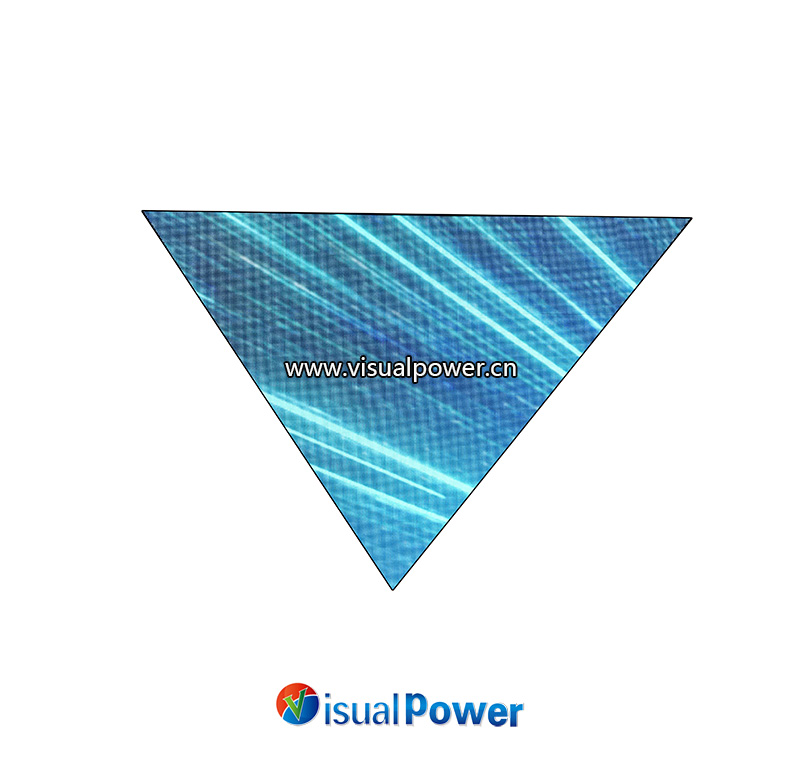Categories
- News (82)
- case study (6)
To be honest, before I actually assembled a triangle LED display with my own hands for the first time, I was also a “square enthusiast” – thinking that the display screen was just square, neat and orderly, and as long as it was high-definition, what else could be done with it?
One day, I took on an exhibition project. One sentence from the other party shattered and reshaped my train of thought: “We don’t want a conventional rectangle. We want to create a triangular three-dimensional visual impact. Can we do it?”
At that moment, I began to truly realize that LED screens are not necessarily square in shape.

Not all projects require a triangular screen, but in some scenarios, the triangular screen is the soul.
In my opinion, the greatest charm of triangle LED display lies in breaking the spatial boundaries. Traditional square display screens guide the viewer’s line of sight very linearly, while triangles – whether they stand alone as modules or are spliced into complex geometric shapes – create a sense of visual dislocation and extension.
Especially when used in some creative Spaces, such as art exhibitions, fashion shows, and technology experience centers, the triangular screen is not only for conveying information; it has already become a part of the installation art itself.
Once in a science and technology museum, I saw a cube composed of three triangle LED screens suspended in mid-air, playing images of interstellar travel. The three-dimensional effect was truly like being instantly transported to space.
Some people might think that a triangle is just a matter of “cutting a few more screens” and putting them together. What’s so difficult about that?
But as someone who has personally experienced the pitfalls, I can responsibly say that the setup of triangular leds is far more complicated than you might imagine. It’s by no means a simple assembly.
First of all, module customization itself requires extremely high precision. The error of each Angle and side length will be infinitely magnified during the final splicing.
The second is the design of the supporting structure. Ordinary rectangular screens can be directly hung on the wall or stacked, while triangular structures require a dedicated bracket system. Sometimes, they even need to be combined with steel structures or irregular welding.
And then there is the content of the picture. Because the display surface is tilted or even folded, special processing should be done in advance when playing materials; otherwise, it is easy to cause the picture to stretch or be misaligned.
To sum up:
If you want to play with triangle LED display, you need to be proficient in hardware, structure and content.
After several years of front-line practical experience, I have found that triangle leds are particularly suitable for these applications:
The atrium installation of the commercial complex: It is designed to be suspended in a three-dimensional manner in accordance with the floor height difference, creating a very strong visual impact.
Background of brand pop-up stores/press conferences: Creating an ultimate sense of technology or avant-garde artistic atmosphere;
Museum interactive exhibits: Triangular three-dimensional displays can better break the sense of flatness when viewing the exhibition.
High-end retail stores: With unconventional screen formats, they catch the eyes of passers-by in the first second.
Especially nowadays, many projects emphasize “immersive experience”. triangle LED display is naturally the kind of hit element that makes people stop and pick up their mobile phones to take pictures and share as soon as it appears.
To be honest, when I first came into contact with this kind of irregular-shaped screen, I made quite a few mistakes.
The biggest lesson is:
Underestimated the difficulty of the production process
The triangular module has extremely high requirements for the consistency of the lamp beads and the control of the seams. Not every factory can produce it stably.
The risks of transportation and installation were ignored
Due to its special structure, the triangular screen is prone to damage caused by uneven force during transportation. Higher standard protective measures must also be adopted during installation.
The content planning is lagging behind.
Sometimes, even after the screen is installed, the materials being played are still “horizontal and vertical”, completely wasting the spatial advantage of the triangular screen. It is essential to plan the content creativity simultaneously!
So now, every time a client asks me, “Can we make triangular leds?”, my first reaction is not to quote a price, but to communicate clearly: Is the load-bearing capacity of your space okay? Are you ready to create content specifically?
Finally, I would like to say that the emergence of triangle LED display has enabled me to have a new understanding of the word “display”.
It is no longer a passive display of images, but can actively participate in the entire spatial narrative and become a part of the experience.
And to be honest, this seemingly “irregular” form is more in line with the subconscious curiosity and desire to explore of human beings.
In the future, I believe in triangles, rhombuses, honeycombs… All kinds of irregular-shaped leds will increasingly appear in our daily lives.
Not all Spaces should be well-behaved.
Not all screens can only be square.
If one day, you are in a shopping mall, an exhibition hall, or at some cool press conference site, and look up to see a device with a triangular rotating, glowing, and flowing picture, don’t be surprised – that is triangle LED display, redefining the boundaries of the world in its own language.